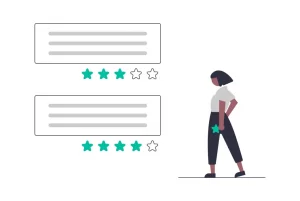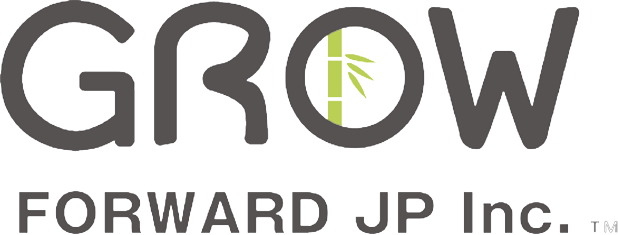Have you noticed that the majority of websites are well-known? Or perhaps you’ve ever wondered why some websites appear in search results automatically when you search a specific keyword on a search bar.
Well, having a substantial SEO is one of the reasons for this, the creation of a stunning website is just a first step. The true challenge is making sure that your product is found among the internet expanse. In situations like these, search engines and users alike can both find your online search engine optimization which serves as a compass.
But first, get to know what makes a good SEO, are you prepared to revolutionize your online presence and embrace the boundless opportunities that lie ahead? Buckle up, because this SEO adventure is about to begin!
WHAT MAKES A GOOD SEO?
A robust SEO strategy integrates thorough keyword research with outstanding content and a user-friendly website design. Alongside this, it centers on off-page tasks such as optimizing title tags, meta descriptions, and header tags. Ensuring your website sustains its ranking and visibility across search engines involves consistent metric analysis and data-driven enhancements.
SEO IN CUSTOM WEB DEVELOPMENT
SEO in custom web development involves seamlessly integrating a range of strategies to enhance a website’s visibility, user experience, and search engine rankings. In custom web development, several factors contribute to effective SEO.

Responsive Design
Create a responsive website that seamlessly adapts to various devices, ensuring a positive user experience and encouraging longer visit durations – a factor search engines take into account when ranking sites.

Site Speed
Enhance user experience and earn favor from search engines with fast-loading websites. Techniques such as optimizing images, minimizing code, and utilizing content delivery networks (CDNs) improve site speed.

Keyword Optimization
Integrate relevant keywords into your website’s content, meta tags, and headers to help search engines grasp the context of your pages and rank them appropriately.

Quality Content
Attract users with high-quality, relevant, and engaging content, while also encouraging natural backlinks from other websites to boost your site’s authority.

URL Structure
Improve both user experience and search engine visibility by creating descriptive and user-friendly URLs that mirror the content’s topic.

Meta Tags
Increase click-through rates from search engine results pages (SERPs) by crafting compelling title tags and meta descriptions that accurately portray page content.

Internal Linking
Enhance the user experience by creating a logical internal linking structure that distributes authority across your website and guides users to relevant content.

Mobile Friendliness
Ensure a mobile-friendly website is in place as mobile searches surge. Implement a mobile-responsive design to guarantee optimal appearance and functionality on various mobile devices.

Schema Markup
Enhance search engine understanding of your content by implementing structured data markup, resulting in richer search results such as featured snippets.

Secure Connection
Instill trust and positively influence search engine rankings by using HTTPS, which encrypts data between the user’s browser and your website.

Social Signals
Although the direct impact of social media on SEO is debated, a robust social presence can indirectly lead to increased visibility, engagement, and potential backlinks.

Sitemap and Robots.txt
Optimize search engine crawling and indexing by creating and submitting a sitemap, while guiding search engine bots on which parts of your site to crawl and index using the robots.txt file.

User Experience (UX)
Contribute to lower bounce rates and longer dwell times by designing a user-friendly interface, easy navigation, and an intuitive layout that signifies user value to search engines.

Local SEO
Businesses targeting specific geographic areas should optimize for local search by creating a Google My Business profile and ensuring consistent NAP (Name, Address, Phone Number) information across platforms.

Regular Updates
Elevate search engine rankings by continuously updating and adding fresh content to your website, signaling its ongoing relevance and value
HOW TO INTEGRATE SEO FACTORS?
At Grow Forward, we seamlessly integrate SEO factors into the custom web development process. This approach ensures that our client’s websites not only showcase a captivating design but also achieve optimal visibility in search engine rankings. By incorporating responsive design, strategic keyword optimization, user-friendly navigation, and other essential SEO elements, we create websites that not only resonate with users but also adhere to the ever-evolving landscape of search engine dynamics. This holistic approach guarantees that our clients’ online presence remains robust, relevant, and attuned to the latest industry standards.
CONCLUSION
An online presence that is dynamic and stands out in the digital crowd is created by weaving together the complex threads of SEO within the framework of custom web development. Each of the above-mentioned factors plays a crucial role in the larger picture of a website that not only captivates visitors but also gains the favor of search engines. Every choice made during the building process has the potential to affect a site’s visibility and reach, from responsive designs that cater to various devices to keyword optimization that speaks the language of various devices to keyword optimization that speaks the language of algorithms to the strategic interplay of internal connections that effortless guide users.
To ensure that your custom web creation finds its rightful place in the digital spotlight and remains relevant in the ever-changing world of search engine dynamics, embracing these SEO factors in custom web development becomes more than just an option – it becomes a necessity.
